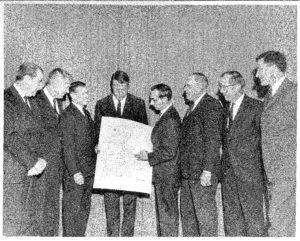NEIWPCC
July 31, 1947 - 75th Anniversary NEIWPCC forms
NEIWPCC Established
Congress recognizes the need for states to coordinate on water pollution control measures, and in 1947 passes legislation allowing for the formation of interstate water pollution control commissions. Connecticut, Rhode Island, and Massachusetts respond immediately by forming NEIWPCC (originally called the New England Interstate Water Pollution Control Commission). Vermont, Maine, New Hampshire, and New York State join shortly thereafter.
NEIWPCC’s early work focused on creating water quality standards and classifications for interstate waters in the region. The extensive water quality sampling and surveying naturally led to issues surrounding wastewater treatment. By the early 1950s, the region saw a rapid pace of construction of municipal wastewater treatment plants.
